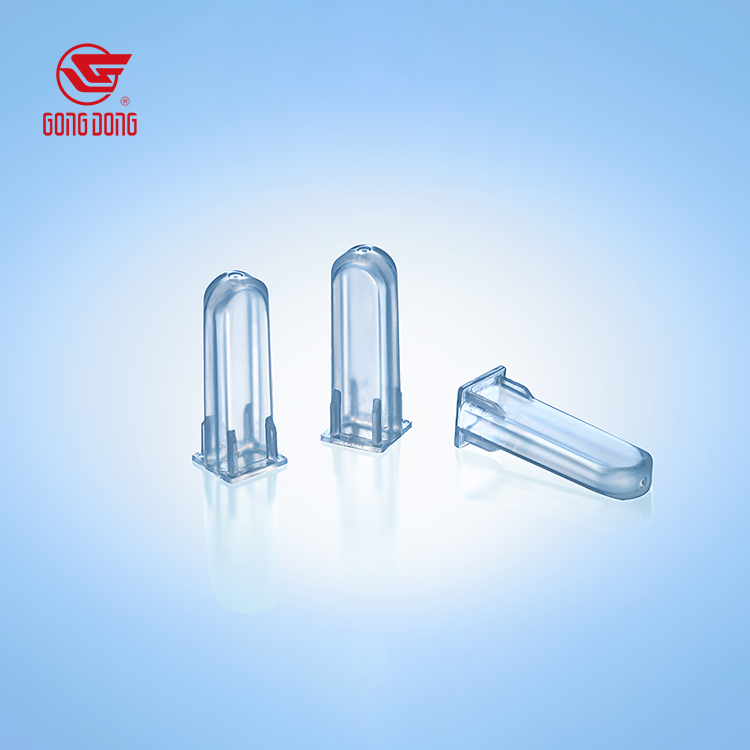

Views: 0 Author: Site Editor Publish Time: 2025-10-27 Origin: Site








Cuvettes are essential tools in the realm of spectroscopic analysis, playing a pivotal role in laboratory settings across various scientific disciplines. These small, often transparent containers are designed to hold liquid samples for optical analysis, enabling researchers to measure the absorbance or transmission of light at specific wavelengths. This process provides crucial insights into the sample's concentration, purity, and reaction progress. For those interested in exploring the diverse applications and specifications of cuvettes, the cuvettes offered by Gongdong are an excellent starting point.

Cuvettes are typically made from materials such as optical glass, quartz, or plastic, each offering distinct advantages depending on the intended application. The choice of material is critical, as it determines the cuvette's transparency across different wavelengths, its chemical resistance, and overall durability. For instance, quartz cuvettes are indispensable for UV measurements due to their excellent transparency in the ultraviolet range, whereas optical glass is suitable for visible light applications.
The design of a cuvette is equally important. Standard cuvettes have a square or rectangular cross-section to minimize refraction artifacts, with two transparent sides allowing light to pass through the sample. This design ensures a consistent optical path, typically 1 cm, which is crucial for reproducible measurements. Some cuvettes also feature frosted or opaque sides for easy handling and labeling, while others are designed with four clear windows for fluorescence and scattering applications.
Selecting the right material for a cuvette is essential for accurate spectroscopic measurements. The material must be transparent at the wavelengths used in the experiment to avoid interference with the results. Optical glass is ideal for visible and near-infrared ranges, offering affordability and good optical clarity. However, it is not suitable for UV measurements below 340 nm due to strong UV absorption.
UV-grade quartz, on the other hand, covers the full UV, visible, and NIR spectrum, making it perfect for high-precision measurements across broad wavelengths. Its excellent chemical and heat resistance, coupled with minimal autofluorescence, makes it a preferred choice for UV-Vis spectroscopy and nucleic acid quantification. For infrared applications, IR quartz extends into the mid-IR range, although it is more expensive and absorbs in the far-IR range.

Cuvettes are indispensable in various spectroscopic techniques, including UV-Vis absorbance measurements, fluorescence spectroscopy, and infrared spectroscopy. In UV-Vis spectroscopy, cuvettes are used to quantify DNA/RNA, proteins, and enzyme kinetics by measuring absorbance at specific wavelengths. This technique is crucial for determining the concentration and purity of samples.
Fluorescence spectroscopy involves observing the emission of light from samples after excitation with a specific wavelength. Cuvettes with four clear windows are used to measure the emitted light at a 90-degree angle, providing insights into the sample's fluorescence properties. In infrared spectroscopy, specialized IR cuvettes or cells are used to analyze molecular vibrations in a solution, offering valuable information about the sample's chemical structure.
Selecting the appropriate cuvette involves considering several factors, including the material, size, and path length. For UV and broad wavelength work, quartz is the gold standard due to its transparency from UV to NIR. For visible-range work, plastic or optical glass cuvettes are cost-effective options, although they are not suitable for UV applications.
The size of the cuvette is also important, as it determines the sample volume required for analysis. Macro cuvettes are ideal for abundant samples, while semi-micro and micro cuvettes are suitable for limited sample volumes. The path length, typically 1 cm, must be consistent to ensure accurate and reproducible measurements.
Cuvettes are a critical interface between samples and spectroscopic instruments, providing a consistent optical path and minimizing contamination and evaporation. Choosing the right cuvette is essential for obtaining accurate and reliable data, ensuring the best results from your analysis. For those seeking high-quality cuvettes, Gongdong offers a range of options designed to meet diverse testing requirements in clinical diagnostics, research, and quality control laboratories.
1. What are cuvettes used for?
Cuvettes are used to hold liquid samples for optical analysis, allowing for the measurement of absorbance or transmission of light at specific wavelengths.
2. Why is quartz preferred for UV measurements?
Quartz is preferred for UV measurements due to its excellent transparency in the ultraviolet range, making it essential for accurate spectroscopic analysis.
3. What is the significance of the path length in a cuvette?
The path length, typically 1 cm, is crucial for ensuring consistent and reproducible measurements in spectroscopic analysis.
4. How do I choose the right cuvette material?
Choosing the right cuvette material depends on the wavelengths used in your experiment, the chemical resistance required, and the overall cost considerations.
5. Can plastic cuvettes be used for UV measurements?
No, plastic cuvettes are not suitable for UV measurements as they absorb UV light and can distort results.
6. What are the common applications of cuvettes in spectroscopy?
Cuvettes are commonly used in UV-Vis absorbance measurements, fluorescence spectroscopy, and infrared spectroscopy to analyze various sample properties.
7. What factors should be considered when selecting a cuvette?
When selecting a cuvette, consider the material, size, path length, and the specific requirements of your spectroscopic analysis.